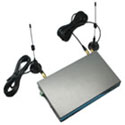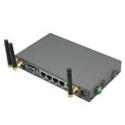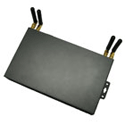5G is still in the research stage of technical standards, and in the next few years, 4G will maintain its dominant position and achieve sustained and high-speed development. But 5G is expected to be commercially available by 2020. So today we take a look at 3G, 4G, 5G technology development changes and 5G development trend characteristics.
From 3G to 4G: two in one
4G comes from 3G technology.
In the 3G era, 3GPP has developed FDD technology represented by WCDMA and TDD technology represented by td-scdma respectively.
In the 4G era, as the representative technology of 4G, LTE, one of the important works is to integrate FDD technology and TDD technology, and unify FDD and TDD into a technical specification system for common development, which can be considered as a combination.
The integration of 4G is not only a technical one, but also an organizational one.
In the 3G era, there are two technical specification organizations: 3GPP and 3GPP2. Although the two groups were large and small, they were still competing with each other.
In the 4G era, 3GPP2 could not be maintained and was finally integrated into 3GPP, realizing the unification of technical specification organization in the mobile communication field.
For example, in the 3G era, the big house of 3GPP opened two stovels, respectively cooking FDD and TDD rice, and there is a small house of 3GPP2 next door.Arrived 4G times, 3GPP besides the hearth closes 2 outside for one, still annex the small house of 3GPP2 next door, dimensions expands ceaselessly.
From 4G to 5G: three divisions
After LTE was unified, I thought mobile communication technology could go all the way to the end, but I didn’t expect bifurcation soon appeared.This is also thanks to LTE’s versatility, which allows for not only person-to-person communication, person-to-machine communication, but also device-to-device communication.So while LTE has three features, it even has flexible wireless parameters. But LTE’s advantages are not enough to match the demands of a vast world.
So, starting with the R13 version of LTE, there’s a new branch: NBIOT, or narrow-band Internet of things, for devices with low power consumption, low rates and narrow bandages.
As the name suggests, NBIOT’s narrow band and LTE’s broadband features are two different things. So it was too difficult to integrate the two ends of the ice and fire, and the branching was inevitable.
In the era of 5G, two branches became three. The three branches of 5G are named eMBB, mMTC and URLLC respectively, corresponding to three application scenarios.
EMBB is a higher rate, achieved through greater bandwidth and improved baseband rate, which is a continuous evolution in the LTE mainstream.
MMTC is more terminals and very low power consumption, known as the Internet of things. MMTC is an evolution based on NBIOT.
URLLC is lower latency and higher reliability and is primarily used for Internet of vehicles. URLLC requires very short latency with faster scheduling.
Characteristics of the development trend of 5G
1. The spectrum utilization rate is greatly improved, and the high-frequency spectrum resources are more utilized
At present, the spectrum resources used for mobile communication are very limited, but China’s spectrum resources are allocated to various radio departments in a fixed way, which leads to the uneven utilization of resources and low utilization rate. Compared with 4G networks, 5G spectrum utilization will be greatly improved, and the high frequency resources will be appropriately applied to overcome this serious problem.
2. To support business personalization to a greater extent and provide all-round information services
People’s demand for mobile communication tends to be personalized and hierarchical. They can leave the communication network all the time in their lives. One of the goals of 5G is to build a more complete network architecture and improve the ability to support a variety of emerging businesses, so as to create a new communication life for users.
3. Communication speed is greatly improved
With the rapid development of information age, people have higher and higher requirements on the rate of obtaining information, which is a great challenge to the transmission rate of communication network. The theoretical data transmission rate of 5G network is 100 times that of 4G standard. 4G has a maximum peak speed of 1G, while 5G can reach 10G. This means that, on 5G networks, an ultra-high-definition movie can be downloaded in less than a second. At the same time, 5G network in the transmission will also present low delay, high reliability, low power consumption and other characteristics.
4. Energy conservation
In 5G network, effective green and energy-saving technologies will be adopted to reduce network losses and control energy consumption within a certain range while ensuring communication quality. In the future communication process, operators can adjust the distribution of resources according to the real-time communication conditions, so as to save the network energy.
At present, the research of 5G is still in the early stage, and there are still many technical problems to be solved. With the continuous deepening of its research process, 5G will inevitably bring new communication experience to users in the future and comprehensively promote the development of the information age.







